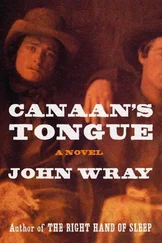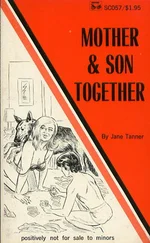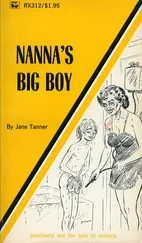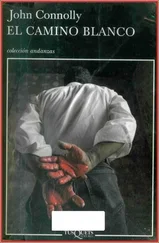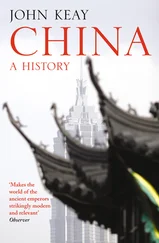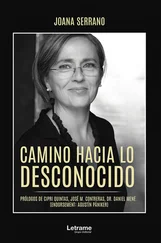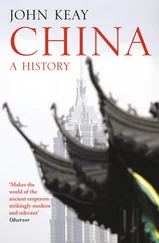While Cane was clearly an artistic success, sales were disappointing. It sold only one thousand copies, but it was printed in a second edition. As Toomer himself remarked: “The reviews were splendid. It didn’t sell well, but it made its literary mark — that was all I asked.” 138The strength of the reviews was doubtless a factor in Liveright’s decision to reissue the second, smaller edition in 1927. While scholars would continue to praise Cane , it would remain out of print until the appearance of the third edition in 1967, followed by editions in 1969 and 1975. Doubtless, the renewed interest in the Harlem Renaissance by the writers of the Black Arts movement of the 1960s, the institutionalization of the field of African American Studies in 1969, and the dramatic growth of African American literary studies through the 1980s led to the first Norton Critical Edition in 1988, splendidly edited by Darwin T. Turner.
Though Cane had “made its literary mark,” Toomer’s relationship to the book he so much desired to be published began to shift as early as the fall of 1923. This shift, which would eventually result in his rejection of the book he once regarded as the “passport” that “would lead [him] from the cramped conditions of Washington which [he] had outgrown, into the world of writers and literature,” would be catalyzed by his friend Waldo Frank and his publisher, George Liveright, 139involving the launch of Cane itself and the efforts by Liveright to promote it. Frank had written, by all accounts, a beautiful foreword to Cane. He lavished praise upon his friend and protégé’s debut book: “A poet has arisen among our American youth who has known how to turn the essences and materials of his Southland into the essences and materials of literature.” 140Quite perceptively, the ever-supportive Frank described Cane as “an aesthetic equivalent of the land.” So far, so good.
However, the language that disturbed Toomer, was this: “A poet has arisen in that land who writes, not as a Southerner, not as a rebel against Southerners, not as a Negro, not apologist or priest or critic: who writes as a poet. ” 141Moreover Frank’s references to Toomer as “the gifted Negro” and “an American Negro” inadvertently only made matters worse so far as Toomer was concerned, undermining his desire to position himself publicly as a writer “neither white nor black.” Frank’s straightforward description of Toomer as a Negro, notwithstanding Toomer’s belabored efforts to explain his racial sense of himself to his friend privately, felt first like disappointment, and then betrayal: “One day in the mail his [Frank’s] preface [ sic ] to my book came. I read it and had as many mixed feelings as I have ever had. On the one hand, it was a tribute and a send-of as only Waldo Frank could have written it, and my gratitude for his having gotten the book accepted rose to the surface and increased my gratitude for the present piece of work in so far as it affirmed me as a literary artist of great promise. On the other hand, in so far as the racial thing went, it was evasive, or, in any case, indefinite.” 142
For reasons that are not clear to us, Toomer obsessed and fretted about Frank’s references to his race in the foreword, as if Frank had either invented his black ancestry or publicly unmasked him as a Negro writer, leading him inevitably to question Frank’s motives: “Well, I asked myself, why should the reader know? Why should any such thing be incorporated in a foreword to this book? Why should Waldo Frank or any other be my spokesman in this matter? All of this was true enough, and I was more or less reconciled to let the preface [ sic ] stand as it was, inasmuch as it was so splendid that I could not take issue with it on this, after all, minor point, inasmuch as my need to have the book published was so great, but my suspicions as to Waldo Frank’s lack of understanding of, or failure to accept, my actuality became active again.” 143Toomer would also claim that he learned from mutual friends that it was Frank who had constructed a portrait of him as a Negro in the literary circles of New York, a portrait that, he felt, misrepresented the “actuality” of his race, or his racelessness. Toomer, no doubt unfairly given his extensive contacts with other black writers in Washington and New York and his grandfather’s historical status as the highest ranking black elected official in the whole of Reconstruction, claimed to believe that it was “through Frank’s agency that an erroneous picture of me was put in the minds of certain people in New York before my book came out. Thus was started a misunderstanding in the very world, namely the literary art world, in which I expected to be really understood. I knew none of this at the time….” 144While Kerman and Eldridge write that Toomer and Margaret Naumburg, Frank’s wife, “were entranced with each other from the first time they met,” the unhappy poet of Cane may have ended his friendship with Frank by seeking his revenge, in part, by seducing his mentor’s wife. 145
While Toomer was still reeling from Frank’s “betrayal,” Liveright requested that Toomer capitalize upon his African American ancestry in the publicity for Cane , and this, as it turned out, would further complicate his relationship to his publisher and his first book. It is clear that Toomer wanted to write about the Negro, but not be regarded as a Negro. In fact, it is also clear that Toomer wanted to break out of the race itself through art, transcending the Negro world in a manner, say, that never would have occurred to Irish writers such as William Butler Yeats or James Joyce. Toomer objected to the oversimplification of what he seems, at times, genuinely to have believed was a truly complex, new racial identity, one too subtle, hybrid, or nuanced to be classified by those gross signifiers “black” and “white,” especially to be exploited for the commercial purpose of selling the very book that he hoped would be his transport out of blackness. Accordingly, he refused to cooperate with Liveright, notwithstanding the risk that his refusal might jeopardize his book’s publication. Toomer defiantly declared his position on race and marketing in a well-known letter to Liveright, dated September 23, 1923: “First, I want to make a general statement from which detailed statements will follow. My racial composition and my position in the world are realities which I alone may determine…. As a unit in the social milieu, I expect and demand acceptance of myself on their basis. I do not expect to be told what I should consider myself to be.” 146But Toomer did not stop there: “As a Boni and Liveright author, I make the distinction between my fundamental position, and the position which your publicity department may wish to establish for me in order that Cane reach as large a public as possible. In this connection I have told you…to make use of whatever racial factors you wish. Feature Negro if you wish, but do not expect me to feature it in advertisements for you. I have sufficiently featured Negro in Cane. ” 147Toomer’s dispute with Liveright over his book’s marketing, following close upon his reaction to Frank’s foreword, only added insult to injury, further alienating him from Cane.
It should not surprise us, then, that Alain Locke’s decision to reprint excerpts from Cane in The New Negro without Toomer’s permission just about drove Toomer to distraction: “But when Locke’s book, The New Negro, came out, there was the [Winold] Reiss portrait, and there was a story from Cane [Locke reprinted the stories “Carma” and “Fern,” as well as the poems “Georgia Dusk” and “Song of the Son”], and there in the introduction, were words about me which have caused as much or more misunderstanding than Waldo Frank’s.” 148Toomer felt betrayed by the two major figures at the center of the literary worlds that claimed him, and by both he felt completely misunderstood. But between the two, Toomer reserved his greater scorn for Locke: “However, there was and is, among others, this great difference between Frank and Locke. Frank helped me at a time when I most needed help. I will never forget it. Locke tricked and misused me.” 149Toomer seriously considered contesting Locke’s representation of him as a black writer, ultimately deciding against doing so because he was convinced that he probably could never correct the record, and fearing that his efforts at any sort of clarification would only contribute to the confusion. So Jean Toomer — despite his vehement objections — came to be known as a black writer through Cane, the book that ironically brought him the fame and acceptance in the literary world he had been seeking for so long.
Читать дальше



